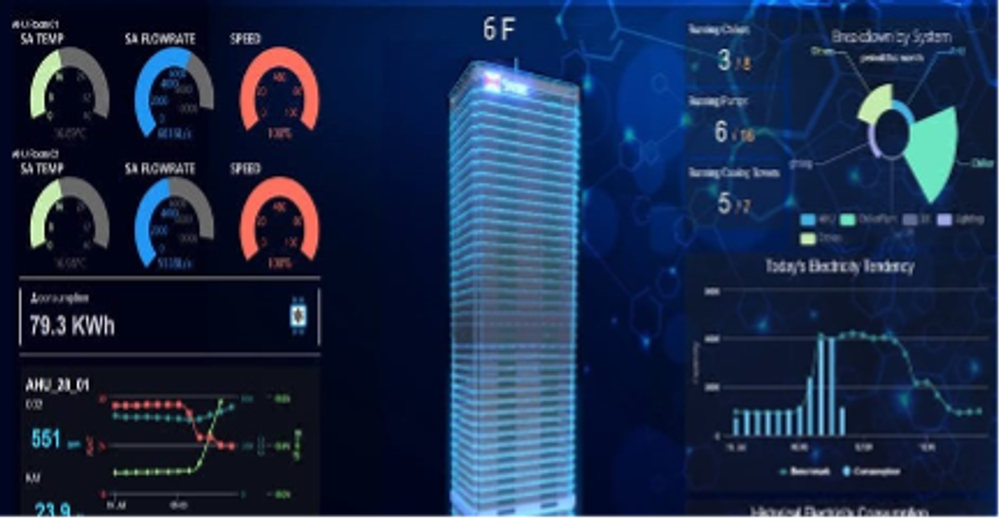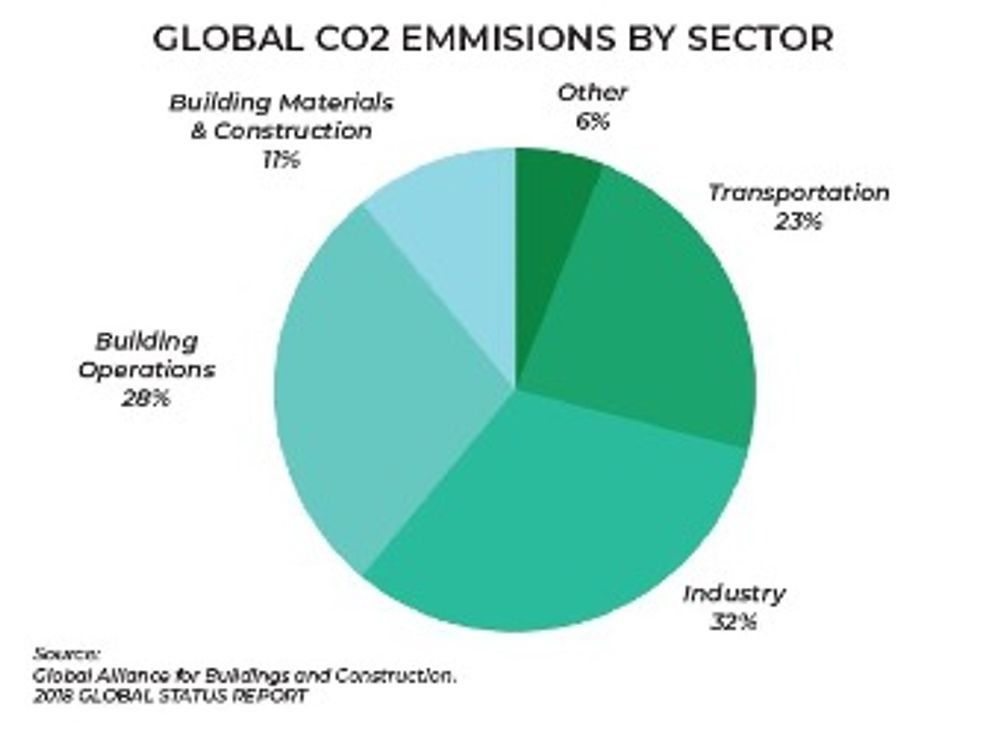- 智能建筑利用先进技术和物联网系统优化能源使用,以最大限度地减少碳足迹和运营成本。
- 智能建筑通过提供舒适、健康的室内环境来提升用户体验,从而提高租户的幸福感和工作效率,最终提高盈利能力。
- 从长远来看,智能建筑可带来丰厚的投资回报,确保物业面向未来,并确保其长期相关性和竞争力。
在气候变化和经济动荡的世界中,智能建筑成为希望的灯塔。这些高科技结构将可持续性 与盈利能力融为一体,表明环境责任和财务成功可以齐头并进。本文深入探讨了智能建筑的世 界,揭示了它们如何平衡能源效率、用户舒适度和投资回报,同时为更绿色的未来做出贡献。
能源效率革命:优化建筑运营
在全球变暖和环保意识日益增强的时代,能源效率革命正在加速推进,智能建筑引领了这 一潮流。这些技术先进的建筑重新定义了可持续性和盈利能力之间的平衡,证明两者可以无缝共存。这场革命主要由优化建筑运营推动,这是从根本上改变我们的建筑环境并显著减少碳足迹的一个因素。智能建筑的核心是优化能源使用。它们可以通过使用互联系统和物联网 (IoT) 技术实时监控和调整能源消耗
楼宇管理系统 (BMS) 的作用
任何智能建筑的支柱都是其建筑管理系统 (BMS)。该智能系统收集并分析遍布整个建筑的各种传感器的数据。输出结果是什么?一栋可以自主调节供暖、制冷和照明系统以节约能源的 建筑,同时为居住者提供最佳舒适度。Arup 和 Venturous Group 的合资企业 Neuron Digital Group 开发的 BMS 就是一个例子。这是一个针对建筑优化的全栈数字平台,提供基于云的集 成技术平台,具有数字孪生、人工智能和大数据功能,可将能源成本降低高达 30%,同时提 高居住者的舒适度并实现数据驱动的优化决策。国际能源署报告称,BMS 技术可以将全球建 筑能耗降低 10%。

未来趋势
人工智能和机器学习人工智能 (AI) 和机器学习 (ML) 将把智能建筑的能源效率革命推向新的高度。通过学习过去的数据,这些系统可以更有效地预测和优化能源使用,从而进一步节约能源并实现可持续发展。根据 Markets and Markets 的数据,建筑市场的人工智能预计将从 2018 年的 4.07 亿美元增长到 2023 年的 18 亿美元,这清楚地表明了未来的发展轨迹。智能建筑的能源效率革命巧妙地融合了技术、可持续性和盈利能力,是应对气候变化的世界的希望灯塔。随着我们优化建筑运营,我们可以期待一个可持续发展和利润齐头并进的未来,在智能建筑的力量的推动下。亚太地区预计将以最高的复合年增长率增长。
从节能到盈利
智能建筑的环境效益显而易见,同时还带来了显著的盈利能力。通过提高能源效率来优化建筑运营可以大幅节省成本。美国能源效率经济委员会 (ACEEE) 的一项研究发现,如果能源效率提高 1-4%,商业建筑可以节省高达 600 亿美元的成本。

建筑施工和运营占全球二氧化碳排放量的 40%凭借先进的系统和传感器,智能建筑能够进行预测性维护,在潜在问题变成代价高昂的问题之前发现它们。这可以降低维护成本并延长建筑系统的使用寿命。IBM 发现,预测性维护可以将维护成本降低 25% 至 30%,这凸显了智能建筑的成本节约潜力。
适应不断变化的市场条件
用户期望不断发展,对建筑环境的舒适性、便利性和健康性的需求不断增加。智能建筑配备了先进的系统来监控和调整室内条件,可以适应不断变化的用户期望,随着时间的推移提升用户体验。凭借其先进的功能和可持续性资质,智能建筑在应对不断变化的市场条件方面也更具弹性。
可持续发展,面向未来
在技术快速进步和可持续发展标准不断发展的时代,面向未来的投资对于建筑业主来说至关重要。智能建筑旨在适应技术进步。其灵活且可扩展的基础设施可以轻松集成新技术,确保它们始终与最新的数据提取创新保持同步,满足不断变化的可持续发展要求。随着可持续发展标准变得越来越严格,不符合这些标准的建筑可能会失去竞争优势。德勤的一份报告表明,具有先进技术能力的建筑不太可能过时,从而保护了建筑业主的投资。
财务回报和盈利能力
智能建筑不仅有助于可持续发展,还能带来可观的财务回报。从节能到增加房产价值和租金收入,这些建筑提供了丰厚的投资回报。世界绿色建筑委员会的一项研究发现,包括智能建筑在内的绿色建筑可以使资产价值比传统建筑增加 7%。
利用激励措施
许多政府为节能建筑提供财政激励,从税收抵免到补助金。业主可以利用这些激励措施,投资智能建筑并提高投资回报率。例如,美国能源部为商业建筑的能源效率改进提供了各种激励措施。 智能建筑具有显著的节能效果、更高的物业价值以及吸引和留住租户的能力,因此是一个极具吸引力的投资机会。通过了解投资回报率方程,投资者和建筑业主可以做出明智的决策,利用智能建筑的优势来平衡可持续性和利润。随着智能建筑革命的持续,这些高科技建筑的商业案例变得越来越明显。
拥抱未来
在探索智能建筑在平衡可持续性和利润方面的重要性的过程中,出现了一个共同点——这些结构的变革力量。从重新定义能源效率和利用可再生能源到增强用户体验和面向未来的投资,智能建筑为可持续和盈利的未来提供了一个引人注目的模式。 这些最先进的结构不仅仅是建筑物,更是动态生态系统,可以优化能源消耗、改善室内环境并提供可观的经济效益。智能建筑中集成的先进技术使其具有适应性和弹性,确保其在不断发展的技术环境中具有相关性。
但除了技术实力之外,智能建筑还代表了我们看待和与建筑环境互动方式的范式转变。它们表明,可持续性和盈利能力并不矛盾,而是可以和谐地平衡以实现互利。这种平衡不仅仅是为了降低成本和碳足迹;它还关乎创造能够提高人类福祉、生产力和满意度的建筑。 展望未来,智能建筑的作用将变得更加重要。随着气候变化和环境可持续性成为全球议程的重中之重,技术以前所未有的速度发展,对智能建筑的需求可能会增加。对于建筑业主、投资者和居住者来说,了解和接受智能建筑的好处不仅是明智之举,而且至关重要。 因此,当我们站在可持续发展和技术的十字路口时,前进的道路是明确的。智能建筑不仅是我们建筑环境的未来,更是可持续和盈利世界的未来。现在是我们拥抱未来的时候了,要明白我们今天的行动将决定我们明天的世界。您准备好迈入智能建筑的未来了吗?
参考资料
- [1] 新闻稿:奥雅纳公司与 Venturous Group 成立合资公司 Neuron Digital Group 正式成立并全面投入运营,旨在重新定义和数字化建筑环境
- [2] 国际能源署:能源系统 — 建筑
- [3] 市场与市场:建筑市场中的人工智能
- [4] 智能 CIO:智能建筑技术创造可持续环境的四种方式
- [5] IBM:预测性维护
- [6] 德勤洞察:智能建筑
- [7] 世界绿色建筑委员会:超越商业案例
- [8] 能源效率和可再生能源办公室:商业建筑能效升级的税收优惠







